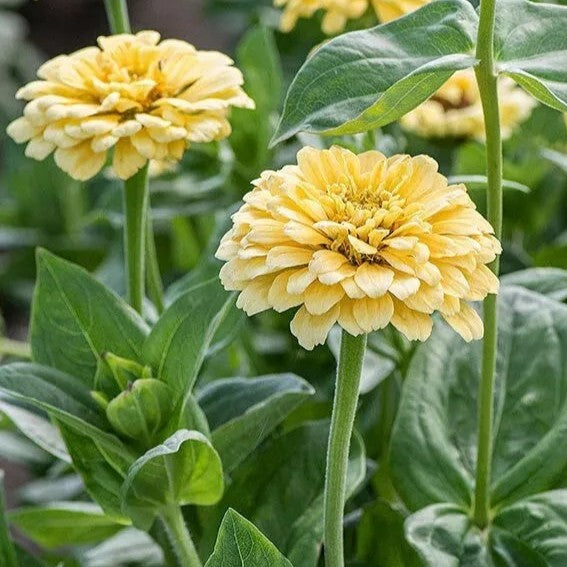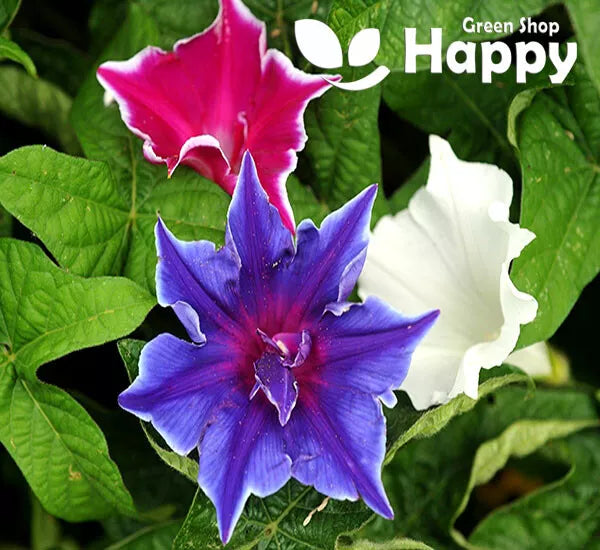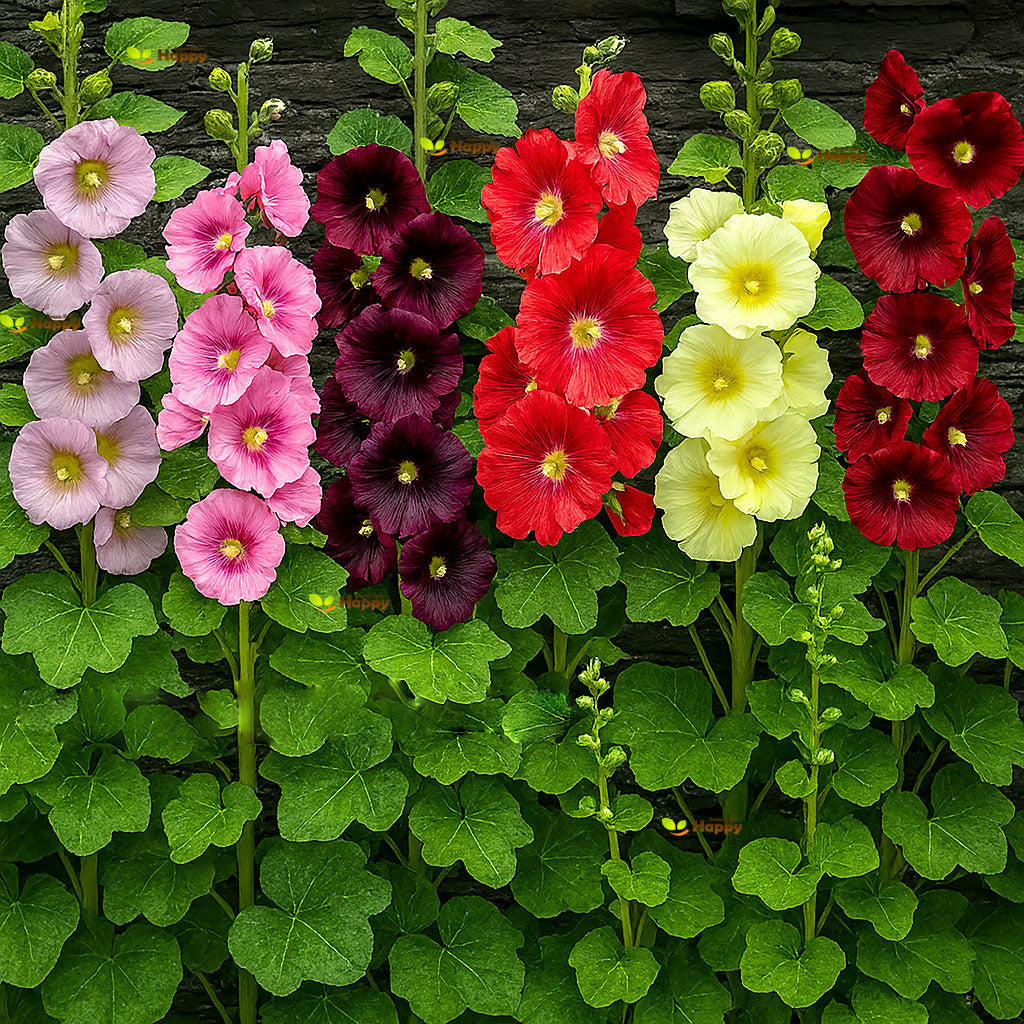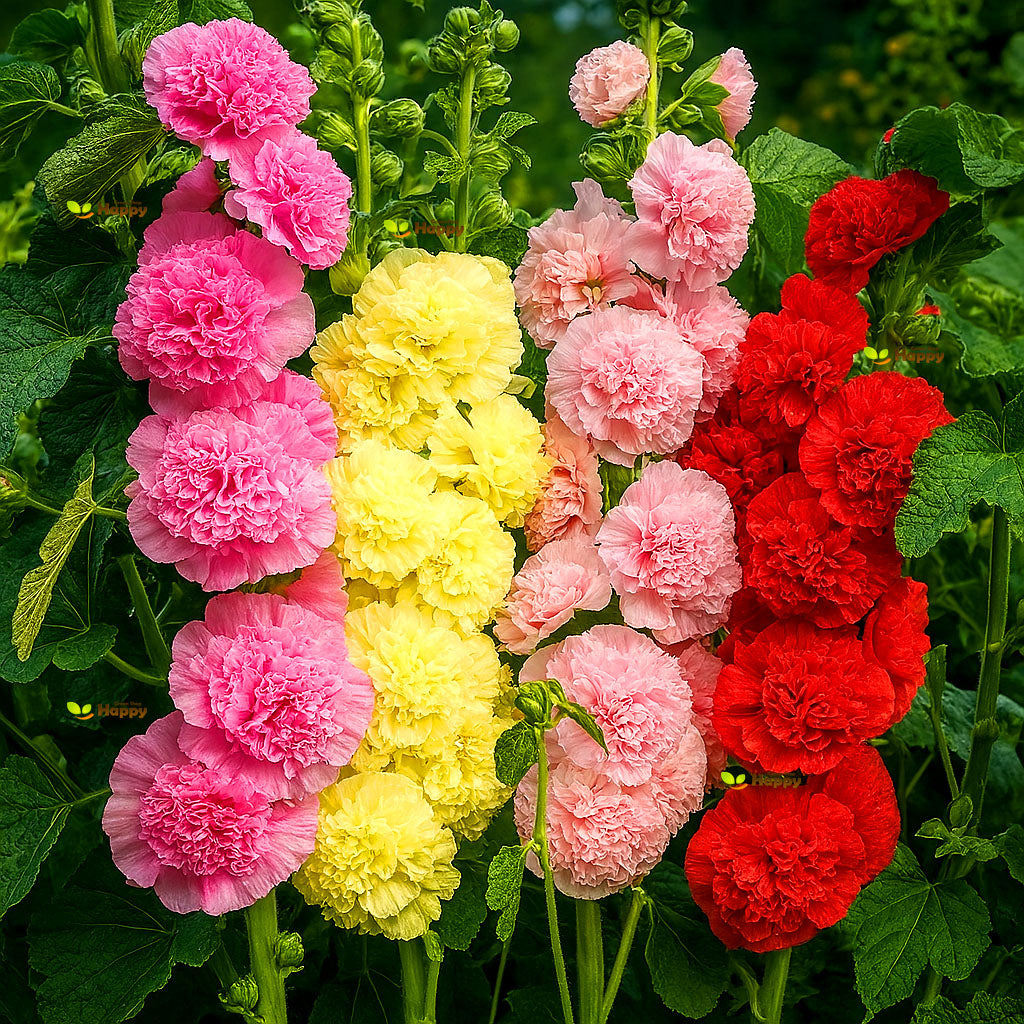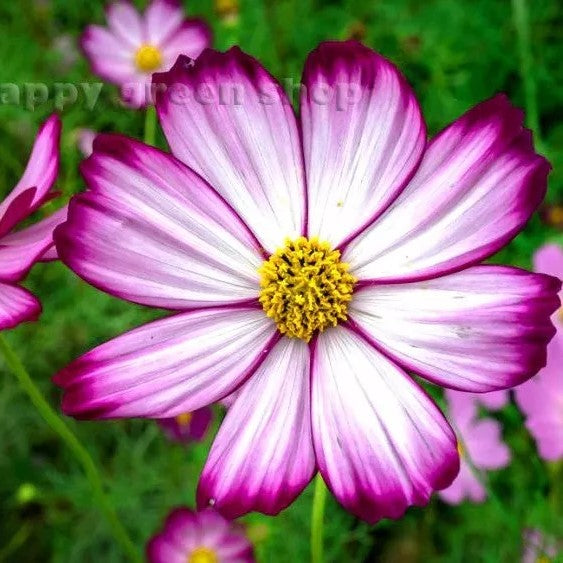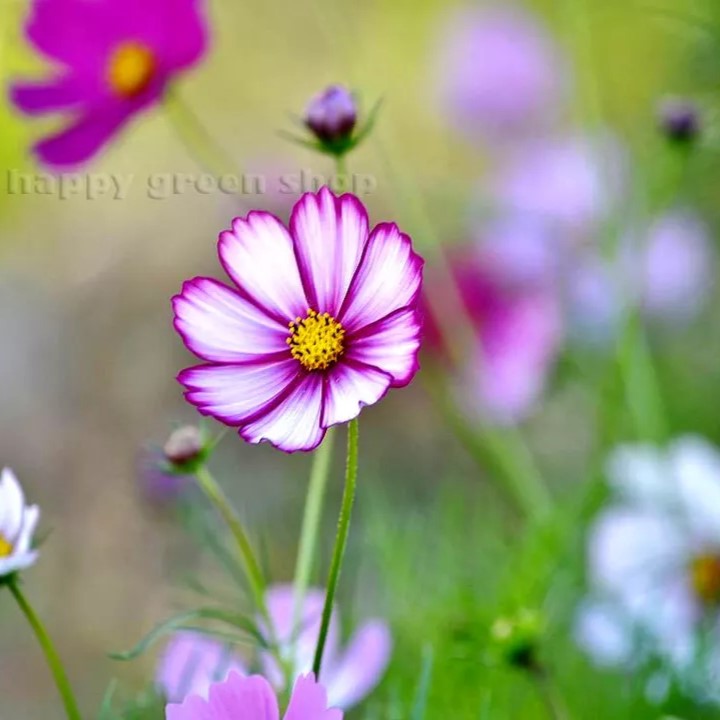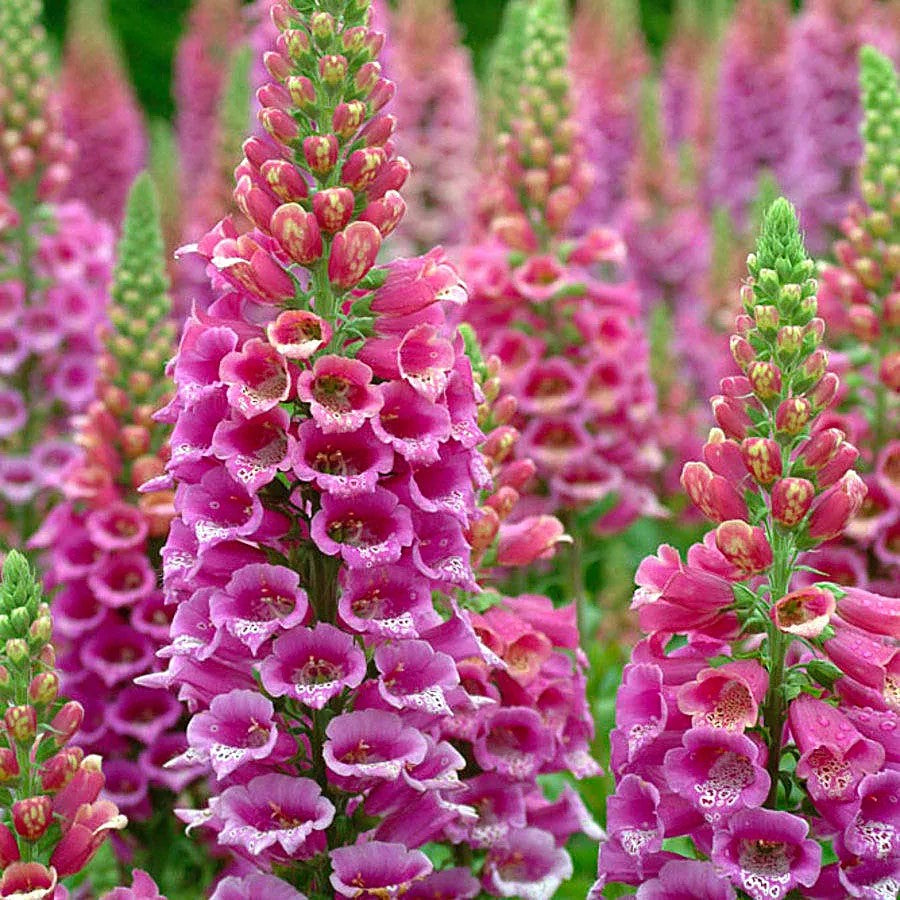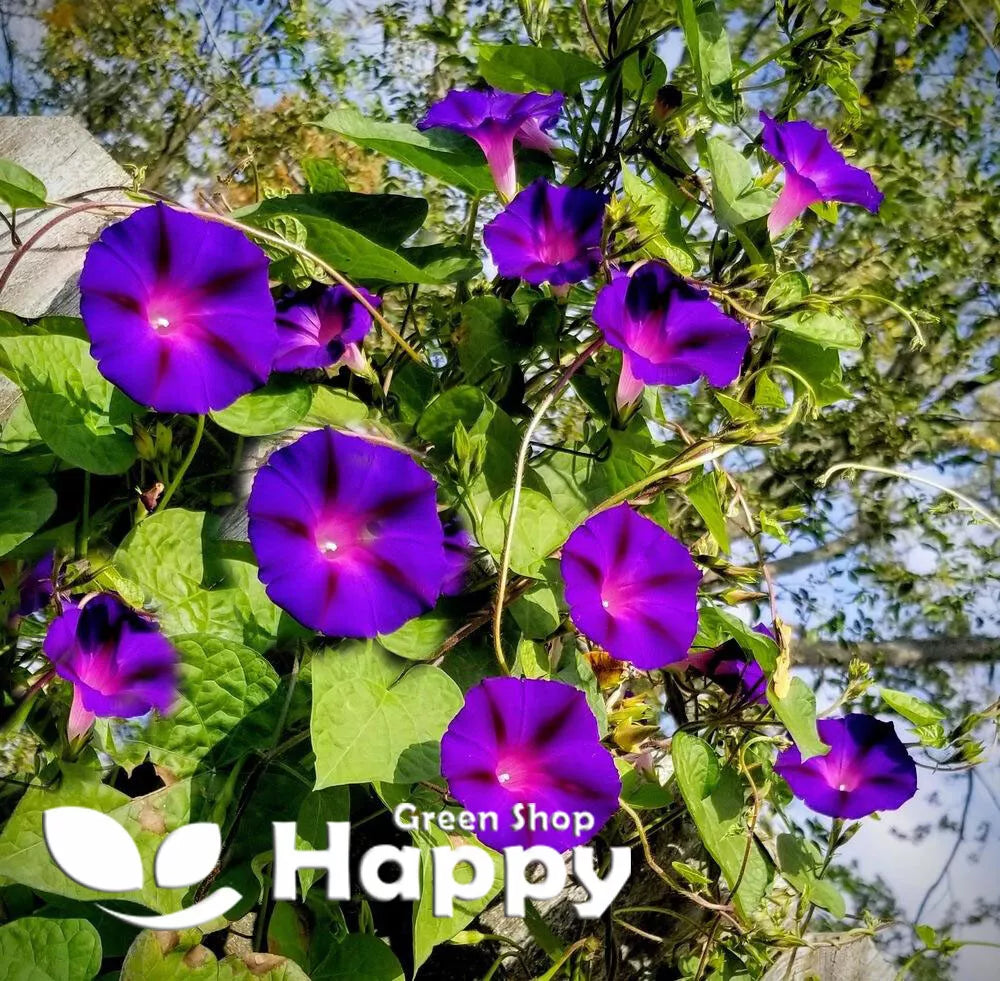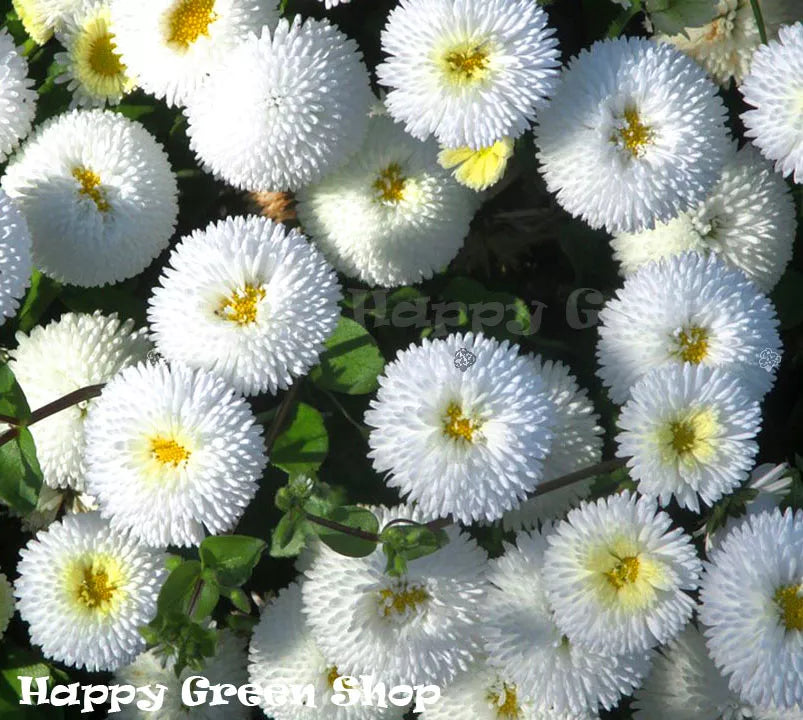Sort by:
69 products
69 products
Japanese Morning Glory 'Kikyo Zaki Mix' – Seeds
(Ipomoea nil)
The Japanese Morning Glory 'Kikyo Zaki Mix' is a traditional and highly prized variety, renowned in Japanese horticulture for its uniquely ruffled, star-shaped blooms. This climbing annual produces an extraordinary mix of deep purples, blues, pinks, and whites, each with striking petal forms that set them apart from common morning glories. The lush green foliage and vigorous growth make it a spectacular choice for trellises, fences, or balcony planters.
Key Features
-
Type: Annual climber
-
Height: 2–3 m
-
Spread: 30–40 cm
-
Flowering: July–October
-
Position: Full sun / partial shade
-
Soil: Fertile, well-drained
Ideal For
-
Training up fences, arches, or trellises
-
Balcony or patio containers with supports
-
Creating a vertical display of colour
-
Collectors of rare Japanese heirloom flowers
Sowing & Growing
-
Sow indoors: March–April in pots or trays
-
Sow outdoors: May–June after last frost
-
Nick or soak seeds for 12–24 hours before sowing to aid germination
-
Germination: 7–14 days
-
Plant spacing: 30–40 cm
-
Requires support to climb
-
Prefers full sun but tolerates light shade
Hyacinth Bean – Seeds
(Dolichos lablab)
Hyacinth Bean is a fast-growing climber that brings striking ornamental value with its purple-tinged stems, lush foliage, and clusters of lilac-purple flowers followed by eye-catching, glossy pods. Perfect for creating quick vertical coverage, it adds vibrant color and an exotic touch to fences, arches, or trellises throughout summer.
Key Features
-
Type: Tender annual climber
-
Height: 200–300 cm
-
Spread: 60–90 cm
-
Flowering: July–October
-
Position: Full sun
-
Soil: Well-drained, fertile soil
Ideal For
-
Trellises and arches
-
Vertical screens and fences
-
Exotic-themed gardens
-
Attracting bees and butterflies
Sowing & Growing
-
Sow indoors: March–April at 18–22°C
-
Germination: 7–14 days
-
Harden off and plant out after frost, spacing 30–45 cm
-
Provide sturdy support for climbing
Hollyhock Single Mix – Seeds
(Alcea ficifolia)
Hollyhock ‘Single Mix’ is a robust and reliable perennial, producing tall spires adorned with single, open-faced blooms in a wide range of classic cottage garden colors. Hardy and vigorous, these hollyhocks thrive in borders, along walls, and in naturalistic plantings, adding striking vertical height and charm year after year.
Why Grow Hollyhock Single Mix?
-
Tall flower spikes with a rainbow of single blooms
-
Hardy, vigorous, and long-lived perennial
-
Perfect for adding height to borders and backdrops
-
Traditional cottage garden favorite
Key Features
-
Type: Hardy perennial (sometimes grown as biennial)
-
Height: 150–200 cm
-
Flowers: Summer (second year onward)
-
Position: Full sun
-
Soil: Fertile, well-drained
Ideal For
-
Cottage and traditional gardens
-
Background planting in borders
-
Pollinator-friendly spaces
-
Adding vertical accents to garden designs
Sowing & Growing
-
Sow indoors: March–May in trays or pots at 15–20°C
-
Sow outdoors: May–July directly into prepared soil
-
Germination: 14–21 days
-
Transplant: Grow on and plant in final positions in autumn
-
Care: Provide support for tall stems and remove faded flowers to extend blooming
Hollyhock ‘Chaters Double Triumph Mix’ Seeds (Althaea rosea)
A true cottage garden classic, the Hollyhock ‘Chaters Double Triumph Mix’ produces tall, stately flower spikes adorned with large, fully double blooms in a rich blend of colors – from soft pastels to vibrant shades. These majestic perennials (often grown as biennials) create a dramatic vertical accent at the back of borders, alongside walls, or in wildflower-style gardens.
What Makes It Special
-
Stunning double blooms in a wide range of colors
-
Impressive tall spires up to 1.8–2.5 m high
-
Attracts bees, butterflies, and pollinators
-
A long-standing favorite in cottage and traditional gardens
Key Features
-
Botanical name: Althaea rosea
-
Common name: Hollyhock Chaters Double Triumph Mix
-
Seed count: Approx. per pack (customizable)
-
Height/Spread: 180–250 cm tall, 50–60 cm spread
-
Position: Full sun; well-drained fertile soil
-
Flowering period: July – September (second year from sowing)
-
Lifespan: Hardy biennial/perennial
Ideal For
-
Cottage and traditional garden borders
-
Planting against walls and fences
-
Pollinator-friendly gardens
-
Creating dramatic vertical height in displays
Sowing Instructions
-
When to sow: Indoors March–May or directly outdoors May–June.
-
How to sow:
-
Sow seeds thinly in trays or pots of moist seed compost, cover lightly.
-
Keep at 15–20°C for germination (14–21 days).
-
Transplant seedlings when large enough, spacing 45–60 cm apart.
-
-
Care: Provide support in exposed areas. Deadhead faded flowers to encourage further blooming.
Garden Cosmos ‘Picotee’ – Seeds (Cosmos bipinnatus)
Garden Cosmos ‘Picotee’ (Cosmos bipinnatus) is an elegant annual producing daisy-like flowers with delicate contrasting edges in shades of white, pink, and magenta. Its tall, airy stems create a graceful, meadow-like effect, making it perfect for borders, cottage gardens, and cutting gardens. Easy to grow and long-flowering, it also attracts pollinators such as bees and butterflies.
Why Grow "Picotee"
-
Striking flowers with contrasting colored edges
-
Tall, airy stems for a graceful, meadow-like display
-
Long flowering season from summer to autumn
-
Attracts pollinators
Key Features
-
Type: Annual (Cosmos bipinnatus)
-
Height: 80–120 cm
-
Flowering: July–October
-
Position: Full sun
-
Uses: Borders, cottage gardens, cutting gardens, pollinator-friendly planting
Ideal For
-
Cottage and wildflower-style gardens
-
Tall border displays
-
Cutting gardens for bouquets
-
Pollinator-friendly garden spaces
Sowing & Growing
-
Sow outdoors: April–June directly in prepared soil
-
Germination: 7–14 days at 18–22°C
-
Thin seedlings to 30–40 cm apart
-
Prefers full sun and well-drained soil
-
Deadhead to prolong flowering
Foxglove 'Excelsior' Mix Seeds (Digitalis purpurea – Biennial)
The Foxglove 'Excelsior' Mix is one of the most admired cottage garden classics, producing tall, elegant spires of tubular flowers in shades of rose, lavender, purple, cream, and white, often marked with speckled throats. Unlike traditional foxgloves, the Excelsior strain displays its flowers all around the stem, creating a fuller and more impressive floral column. As a biennial, it flowers in the second year after sowing and readily self-seeds for future displays.
What Makes It Special
-
Traditional cottage garden favorite with tall, majestic flower spikes
-
Excelsior strain bears blooms on all sides of the stem for maximum impact
-
Attracts bees, butterflies, and hummingbirds
-
Excellent cut flower and stunning for borders or woodland plantings
Key Features
-
Botanical name: Digitalis purpurea
-
Variety: 'Excelsior' Mix
-
Height/Spread: 120–150 cm tall, 40–60 cm spread
-
Position: Partial shade to sun; prefers rich, moist, well-drained soil
-
Flowering period: Late spring to mid-summer (second year)
-
Lifespan: Biennial, often self-seeds for naturalized displays
Ideal For
-
Cottage and woodland-style gardens
-
Back borders for height and structure
-
Naturalizing in shaded areas
-
Pollinator-friendly gardens
Sowing Instructions
-
When to sow: Late spring to summer (May–July) for flowering the following year.
-
How to sow:
-
Sow seeds on the surface of moist compost (do not cover – light aids germination).
-
Keep at 18–22°C until germination (14–30 days).
-
Transplant seedlings 45 cm apart in borders or beds.
-
-
Care: Water regularly, especially in dry spells. Remove spent flower spikes to extend blooming, or allow some to seed for natural regeneration.
Fluorescent Morning Glory ‘Feringa’ – 30 Seeds
(Ipomoea purpurea) – Annual Climber
The Fluorescent Morning Glory ‘Feringa’ is a striking climbing variety with vivid, glowing blooms in shades of intense purple-pink that catch the eye from a distance. With its fast growth and twining habit, it’s ideal for creating living walls, natural screens, or trellis displays. Flowers open in the morning, attracting pollinators, and fade gently by evening.
Key Features
-
Type: Annual climber
-
Height: 200–300 cm
-
Blooming period: July–October
-
Position: Full sun
-
Soil: Well-drained, moderately fertile
Ideal For
-
Trellises, arches, and pergolas
-
Fences and walls
-
Vertical garden displays
-
Pollinator-friendly spaces
Sowing & Growing
-
Soak seeds overnight before sowing for faster germination
-
Sow indoors: April (in pots at 18–22°C)
-
Sow outdoors: May–June, after last frost
-
Sowing depth: 0.5–1 cm
-
Spacing: 25–30 cm apart
-
Support: Provide climbing structures
-
Care: Water regularly; thrives in sunny, sheltered spots
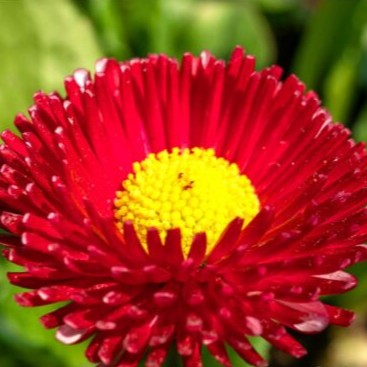
English daisy 'Super enorma' red - 500 seeds (Bellis perennis) Large flowers
£1.15
Unit price perEnglish daisy 'Super enorma' red - 500 seeds (Bellis perennis) Large flowers
£1.15
Unit price perEnglish Daisy 'Super Enorma' Red Seeds (Bellis perennis)
The English Daisy ‘Super Enorma’ Red is a premium variety renowned for its extra-large double blooms in a rich, velvety red shade. Compared to traditional English daisies, ‘Super Enorma’ produces bigger, showier flowers that stand out beautifully in spring borders, containers, and cottage gardens. This hardy perennial, often grown as a biennial, brings an early burst of dramatic color and pairs perfectly with spring bulbs and other bedding plants.
What Makes It Special
-
Extra-large blooms for maximum impact
-
Vivid deep red pompon flowers that brighten spring gardens
-
Compact growth yet highly floriferous
-
Hardy and reliable, ideal for early-season displays
Key Features
-
Botanical name: Bellis perennis
-
Variety: Super Enorma Red
-
Flower size: Larger than standard Bellis varieties
-
Height/Spread: 15–20 cm tall, 15–20 cm spread
-
Position: Full sun or partial shade; moist, fertile, well-drained soil
-
Flowering period: Early spring to early summer
-
Lifespan: Perennial, usually cultivated as a biennial
Ideal For
-
Spring bedding and borders
-
Containers and pots for dramatic color
-
Cottage gardens and mixed plantings
-
Pairing with tulips, hyacinths, and pansies for classic displays
-
Gardeners seeking large, showy daisies in bold red
Sowing Instructions
-
When to sow: May to July for flowers the following spring.
-
How to sow:
-
Sow on the surface of moist seed compost, as seeds need light to germinate.
-
Keep at 15–20°C; germination takes 14–28 days.
-
-
Transplant/Thin: Prick out seedlings when large enough to handle and grow on in cooler conditions. Harden off before planting 15–20 cm apart.
-
Care: Regular deadheading encourages longer flowering. Protect young plants from harsh frost.
English Daisy 'Pomponette' White Seeds (Bellis perennis)
The English Daisy ‘Pomponette’ White is a refined garden classic, producing neat, double pompon-like flowers in pure white. Compact and long-flowering, it brings freshness and elegance to borders, pots, and spring bedding schemes. Its timeless charm makes it perfect for traditional cottage gardens and for pairing with tulips, violas, or primroses.
What Makes It Special
-
Produces pure white, pompon-style blooms for a clean and elegant look
-
Compact, hardy, and easy to grow in most gardens
-
Provides a long flowering season from early spring onwards
-
Excellent choice for classic bedding schemes and container planting
Key Features
-
Botanical name: Bellis perennis
-
Variety: Pomponette White
-
Height/Spread: 15–20 cm tall, 15–20 cm spread
-
Position: Full sun or partial shade; thrives in moist, well-drained soil
-
Flowering period: Early spring to early summer
-
Lifespan: Perennial, often grown as a biennial
Ideal For
-
Cottage gardens and traditional flower beds
-
Spring bedding displays with tulips and primroses
-
Pots, containers, and window boxes
-
Low-growing borders and edging
-
Adding a soft, white contrast to mixed planting schemes
Sowing Instructions
-
When to sow: Late spring to mid-summer (May–July) for flowers the following spring.
-
How to sow:
-
Sow thinly on the surface of moist seed compost.
-
Do not cover, as seeds need light to germinate.
-
Keep moist at 15–20°C. Germination takes 14–28 days.
-
-
Transplant/Thin: When seedlings are large enough to handle, transplant to pots or trays. Plant outdoors 15–20 cm apart.
-
Care: Deadhead faded blooms to prolong flowering. Protect young plants from severe frost.
Showing 45/69




